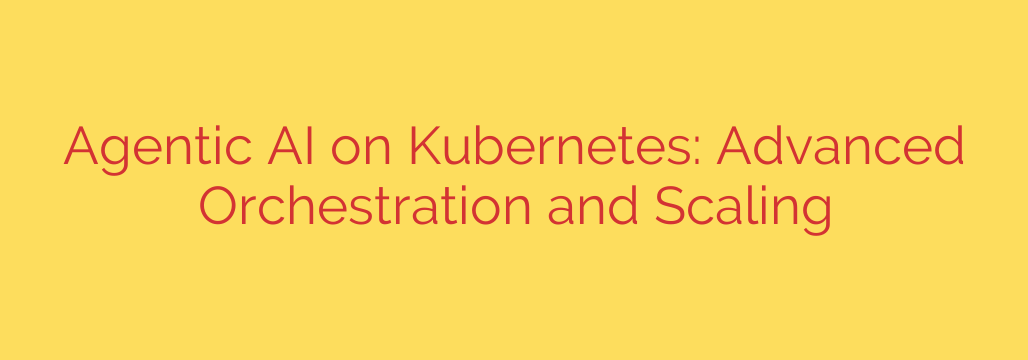
Managing and scaling agentic AI systems, which are characterized by their autonomy and ability to interact with their environment and other agents, presents unique challenges. Unlike traditional AI models that typically perform a single task, agentic systems involve multiple interacting components or agents, often requiring complex workflows, state management, and communication protocols. Deploying such sophisticated systems demands a robust, flexible, and scalable infrastructure.
Kubernetes emerges as an ideal platform for orchestrating and scaling these dynamic agentic workloads. Its core capabilities directly address the needs of distributed agent architectures. Kubernetes excels at managing containerized applications, which is perfect for packaging individual agents or groups of agents. Its powerful orchestration features allow for automated deployment, scaling, and management of potentially hundreds or thousands of agent instances. Key advantages include self-healing, ensuring agents restart if they fail; automated rollouts and rollbacks for updating agents without downtime; and sophisticated resource management to efficiently allocate CPU, memory, and network resources across the cluster.
Deploying agentic AI on Kubernetes typically involves defining agents as container images, structuring their dependencies, and using Kubernetes manifests (like Deployments, StatefulSets, and Services) to specify how they should be run and accessed. For agentic systems that require persistent identity or storage, StatefulSets are particularly valuable, ensuring stable network identifiers and persistent storage volumes per agent instance. Services provide stable network endpoints, enabling agents to discover and communicate with each other regardless of where their underlying pods are running.
Advanced concepts become crucial for complex agentic systems. Service discovery mechanisms, often integrated within or alongside Kubernetes (like CoreDNS or specialized service meshes), are essential for agents to find and interact with specific services or other agents dynamically. Managing the state of individual agents or the collective state of the system is critical; this might involve external data stores orchestrated via Kubernetes or leveraging Kubernetes’ own storage capabilities. Scaling agentic systems on Kubernetes can be automated using the Horizontal Pod Autoscaler (HPA), which adjusts the number of agent replicas based on metrics like CPU usage or custom metrics representing agent workload. For more complex, event-driven scaling, tools like KEDA (Kubernetes Event-Driven Autoscaling) can be employed.
Handling communication patterns between agents is another vital aspect. This can range from simple REST APIs exposed via Services to more complex messaging patterns using message queues (like Kafka or RabbitMQ) deployed on Kubernetes. Integrating these middleware components within the Kubernetes ecosystem simplifies management.
In summary, Kubernetes provides a powerful, scalable, and resilient foundation for deploying and managing advanced agentic AI systems. Its capabilities in container orchestration, resource management, scaling, and state handling are uniquely suited to the complexities of distributed, autonomous agents, enabling developers to build and operate sophisticated AI applications at scale. Leveraging Kubernetes effectively unlocks the full potential of agentic architectures.
Source: https://collabnix.com/agentic-ai-on-kubernetes-advanced-orchestration-deployment-and-scaling-strategies-for-autonomous-ai-systems/








